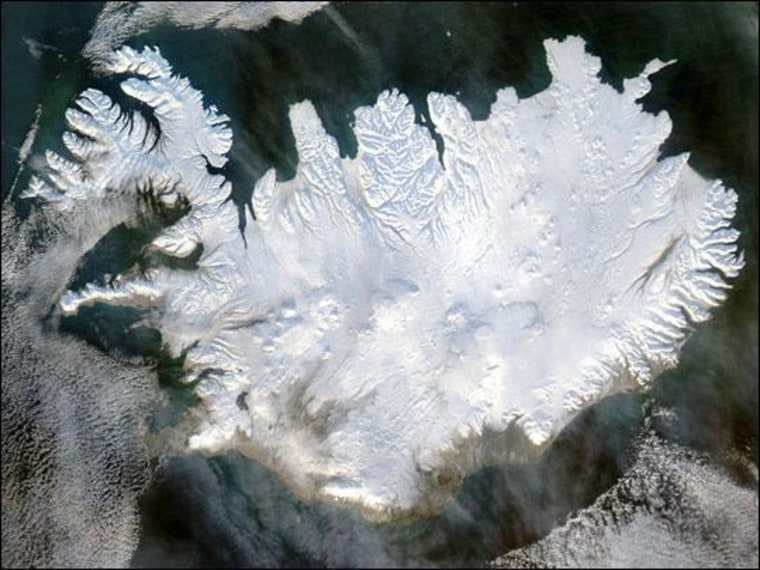By creating mammoth ridges on the seafloor, blobs of unusually hot magma rising below Iceland might have influenced giant patterns of deep ocean currents for millions of years, scientists find.
Numerous V-shaped ridges about 600 miles (1,000 kilometers) long and up to more than 1,600 feet (500 meters) high rise up from the North Atlantic Ocean floor between Greenland and Iceland.
"These ridges and associated troughs were used during the Cold War by Russian and U.S. navies for hiding nuclear subs — see the movie, 'Hunt for Red October,'" said researcher Nicky White, a geologist at the University of Cambridge in England.
To learn more about these ridges, White and his colleagues investigated the chemical signatures of rock samples from them. They discovered that variations in their geochemistry are likely due to globs of unusually hot rock that emerged from the plume of magma upwelling from below Iceland, a circulation pattern of hotter and cooler matter known as convective flow. These blobs, which are 45 degrees F (25 degrees C) hotter than the plume they originated from, then spread outward at speeds of about 15 inches (40 centimeters) per year to help form the ridges.
By analyzing thick drifts of sediment brought in by the flow of water from the Norwegian Sea into the Atlantic, the scientists also discovered that such ridges have apparently controlled North Atlantic Ocean circulation patterns over the past 7 million years by channeling the flow of water.
"It is amazing that stirring inside the Earth has an effect on the ancient circulation of the oceans," White told OurAmazingPlanet.
The scientists detailed their findings online June 5 in the journal Nature Geoscience.
